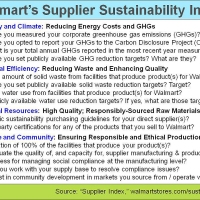Climate Change: What the Science is Telling Us?
“Many people think climate change is a remote problem, but the fact is that it’s already impacting real people, animals, and beloved places all over the world, and these Faces of Climate Change are multiplying every day. Fortunately, other Faces of Climate Change are also multiplying every day: those stepping up to do something about it. For Earth Day 2013, we’ll bring our generation’s biggest environmental challenge down to size – the size of an individual faced with the consequences.” ~ Kathleen Rogers, president of Earth Day Network.The global theme for Earth Day 2013 (22nd April) being “The Face of Climate Change” , Sustainable IITD organized a talk on Climate Change by Prof. Krishna Achuta Rao, Associate Professor at the Center of Atmospheric Science, IIT Delhi. He is also a member of the Indian Climate Research Network, and is also a lead author in the Fifth Assessment Report of the Working Group 1 of the Intergovernmental Panel on Climate Change (IPCC).
Most of us are still skeptical about the concept of Climate Change. Is climate really changing? If yes, then how and when will it start impacting us? There is a need to highlight the mounting impact of climate change on individuals around the world so that they understand how their actions can make a difference in combating this global phenomenon.
Prof. Krishna Rao explained to the audience the science behind climate change. He started the talk with a basic energy balance model of the earth, with the “albedo” and considering the atmosphere as a single, non absorbing layer. He built on it this model by first adding the absorption component, introducing the audience to what is commonly known as the “Green house effect” and then added the complexities of numerous layers of the atmosphere, each having different absorptivity. The earth’s radiation budget thus reveals that as we increase the absorptivity of the atmospheric layers, the long-wave radiation getting reflected back to the surface increases, leading to a higher surface temperature. The absorption spectra of all gases in the atmosphere reveals that all gases which are termed as green house gases indeed absorb light in the infrared region, leading to greater surface temperatures.
This was one example of how changing the composition of the atmosphere can lead to increased global temperature. Other anthropogenic activities like emission of ‘black carbon’ initiates as positive feedback loop, since the black carbon deposits and reduces the reflectivity (albedo) of snow, hence leading to higher net incoming solar radiation (insolation). Many such positive and negative feedback mechanisms exist. For a few, it is difficult to predict whether they will lead to an increase or a decrease in the temperature.
It is certain, however, that anthropogenic involvement is creating an imbalance in Earth’s ecology which will lead to drastic changes in the climate. Our activities are altering the hydrological cycle, cloud formation, oceanic circulation and the convective-radiative balance. Our claiming that “Climate Change” is a myth doesn’t change the fact that human activities are not in harmony with the nature. There is enough evidence that many of the so-called “development” activities have caused serious damage to the ecology and the rate at which these activities are growing is alarmingly high. Therefore, it is important for all of us to realize that the planet we are thriving on will not be able to sustain life if we don’t put a halt to the activities which are potentially detrimental to our mother Earth.



